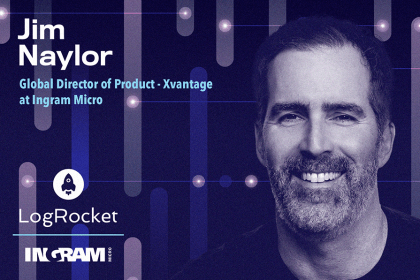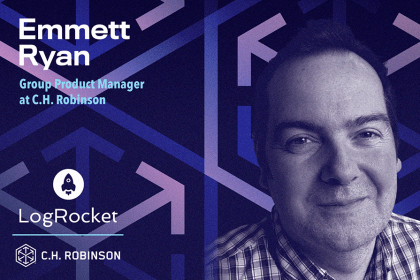My first encounter with project scope was a challenging experience. As a software engineer, I remember attending numerous meetings to ensure our project remained on track. I had never felt so restricted in my life.

This experience exemplifies rigid scope management, which can hinder the creation of a valuable project or product.
It took me some time to make peace with the concept of scope because I rarely saw reasonable results. However, when executed properly, project scope management can deliver significant value.
In this guide, I’ll help you understand more about project scope and how to manage it effectively so you can avoid feeling trapped as I once did.
In a nutshell, project scope defines the boundaries of what you’re trying to achieve. It outlines what will be part of your project and what won’t.
For instance, when organizations outsource a project, they typically specify a list of items that are part of the project and identify others that aren’t. This information constitutes the project scope and can be found in both public and private tenders.
It’s crucial to understand that traditional project scope outlines the outputs required to complete the project. While this approach works well with predictable systems, such as civil engineering, it can lead to frequent scope changes in complex systems when too many outputs are defined upfront.
How you plan your project scope will ultimately determine your level of empowerment. Rigid requirements established upfront don’t work well with digital product management due to the complexity and unpredictability of the digital product world.
Creating an environment that promotes rapid learning increases the likelihood of success.
Here’s how I approach project scope planning:
The key to setting the scope of a project is to identify the characteristics of what you’re trying to achieve instead of specifying what you need to deliver. The more outputs you define, the more time you’ll waste managing scope change processes.
A common way of setting the project scope is by using a work breakdown structure (WBS). This is typically done in collaboration with domain experts and project sponsors. While a WBS can be helpful, it’s challenging to prioritize because it defines the scope without telling a story.
Let me provide a simple example. Suppose you’re creating a marketplace to connect service providers with customers. A basic WBS might look like this:
[INSERT IMAGE]
The challenge with the example above is that it’s difficult to prioritize tasks. That’s why I prefer story mapping as a tool to define project scope.
Story mapping is a method created by Jeff Patton that involves examining the entire journey from start to finish. You then draw a line to indicate your prioritization. This technique works best when a diverse group of people collaborate, including customers.
Here’s an example:
[INSERT IMAGE]
Story mapping helps you gain a better understanding of the overall goal of your project, making it easier to identify what you need to discover and prioritize accordingly.
In traditional project management, breaking the scope, also known as scope creep, was considered a sign of poor product management. Changes had to be negotiated and the scope reviewed. This rigid approach is still used in public and private tenders, but it often fails to contribute to the project’s ultimate goal.
Change is the only certainty in any project. You can either resist or accept change. The former will slow you down, while the latter will accelerate progress. That’s why it’s essential to focus on goals rather than outputs when defining project scope.
Here are my tips for managing project scope effectively:
I began this post by sharing a negative experience with scope management, marred by antipatterns that are still prevalent today. Effective scope management enables teams to concentrate on what matters, while poor scope management hinders value creation.
Here are some characteristics that can help you derive value from scope management:
By incorporating these tips into your project scope management strategy, you can effectively manage the project scope and deliver valuable outcomes.
Remember, the key is to focus on the project’s goal and adapt as necessary based on new information and learning. This approach enables your team to create valuable products and solutions that meet the needs of your stakeholders and customers.
You can use this simple project scope template to guide your project planning and scope management process. Replace the text in italic with the details specific to your project or product:
This project scope template is also available as a Google Doc, which you can customize to suit your own project by selecting File > Make a copy from the main menu bar.
A product is never final; it’s in constant evolution. That’s why you cannot have rigid scope management.
At the same time, no team will innovate without focus. Aim to provide guidance and focus, then let the team do the work.
Guidance over control will help you and your teams create outstanding results.
Featured image source: IconScout
LogRocket identifies friction points in the user experience so you can make informed decisions about product and design changes that must happen to hit your goals.
With LogRocket, you can understand the scope of the issues affecting your product and prioritize the changes that need to be made. LogRocket simplifies workflows by allowing Engineering, Product, UX, and Design teams to work from the same data as you, eliminating any confusion about what needs to be done.
Get your teams on the same page — try LogRocket today.

Jim Naylor shares he views documentation as a company’s IP and how his teams should use it as a source of truth.

Act fast or play it safe? Product managers face this daily. Here’s a smarter way to balance risk, speed, and responsibility.

Emmett Ryan shares how introducing agile processes at C.H. Robinson improved accuracy of project estimations and overall qualitative feedback.

Suvrat Joshi shares the importance of viewing trade-off decisions in product management more like a balance than a compromise.